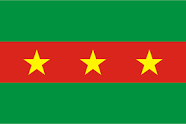Difference between revisions of "Language/Ewe/Grammar/Plurals"
m (Quick edit) |
m (Quick edit) |
||
| Line 36: | Line 36: | ||
<hr>If you have any questions, please ask them in the comments section below.<br>Feel free to edit this wiki page if you think it can be improved. 😎 | <hr>If you have any questions, please ask them in the comments section below.<br>Feel free to edit this wiki page if you think it can be improved. 😎 | ||
==Related Lessons== | |||
* [[Language/Ewe/Grammar/Conditional-Mood|Conditional Mood]] | |||
* [[Language/Ewe/Grammar/Pronouns|Pronouns]] | |||
* [[Language/Ewe/Grammar/Negation|Negation]] | |||
* [[Language/Ewe/Grammar/Adjectives|Adjectives]] | |||
* [[Language/Ewe/Grammar/Questions|Questions]] | |||
* [[Language/Ewe/Grammar/Future-Tense|Future Tense]] | |||
{{Ewe-Page-Bottom}} | {{Ewe-Page-Bottom}} | ||
Revision as of 22:52, 25 February 2023
Hi Ewe learners!😊
Learning Ewe Grammar can be a challenging task, but with the right approach and dedication, you can master it in no time! In this lesson, we will focus on plurals in Ewe.
Plural Formation
In Ewe, there are two ways to form plurals: by adding a suffix or by reduplication.
Suffix
The most common way to form plurals is by adding a suffix. The suffix used depends on the noun's gender and number. For example, the suffix -me is used for masculine singular nouns, while the suffix -ma is used for feminine singular nouns.
For example, the word for "man" is ɖeviwo, and the plural form is ɖeviwome (men). Similarly, the word for "woman" is ɖevi, and the plural form is ɖevimma (women).
Reduplication
Another way to form plurals is by reduplication. This means repeating the same word twice. For example, the word for "child" is ɖeviwo, and the plural form is ɖeviwoɖeviwo (children).
Plural Agreement
When using plurals, it is important to make sure that the verb agrees with the noun. This means that the verb must also be in the plural form. For example, if the subject of the sentence is "men", then the verb must also be in the plural form.
For example, the sentence "The men are eating" would be written as ɖeviwome nye (the men are eating).
Practice
Now that you know how to form and use plurals in Ewe, it's time to practice! Here are some examples:
- ɖeviwoɖeviwo nye (the children are eating)
- ɖevimma nye (the women are eating)
- ɖeviwome nye (the men are eating)
If you want to improve your Ewe Grammar, you can also use the Polyglot Club website. Find native speakers and ask them any questions!
If you have any questions, please ask them in the comments section below.
Feel free to edit this wiki page if you think it can be improved. 😎
